Lunar Love: Reappraising the Value of the Beatles’ Cover of ‘Mr. Moonlight’
by Colin Fleming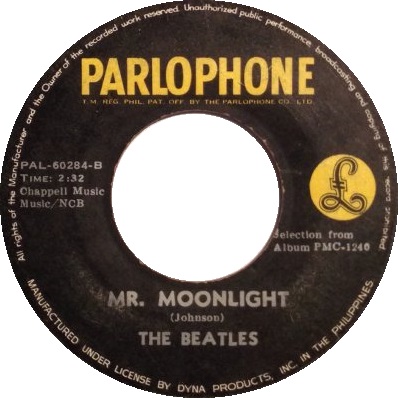 If there’s a consensus least popular Beatles track, it would seem to be the band’s cover of Doctor Feelgood and the Interns’ “Mr. Moonlight” from the Beatles for Sale album.
If there’s a consensus least popular Beatles track, it would seem to be the band’s cover of Doctor Feelgood and the Interns’ “Mr. Moonlight” from the Beatles for Sale album.
Beatles fans are apt to recall how readily the number has been singled out for excoriation from their earliest days of following the band. Here was not just the bottom of the barrel, but the lowest of splinters, as if they had to be tweezed out of the ground.
Other cuts are offered up for the ignominious distinction. The Ringo Starr-sung cover of Buck Owens’ “Act Naturally” from Help! has never fared particularly well, but it comes with caveats: Starr had to contribute a vocal on the album, and the narrative perspective of the song pokes gentle, self-deprecating fun at the drummer singing it.
Then there’s “Wild Honey Pie” from the White Album, but it too has its asterisk: the song, as such, is essentially a throwaway/linking device on an album full of weird and fascinating segues and offhand oddities. It meshes with the anything goes so long as it contributes allure of the extended piece.
George Harrison’s “Don’t Bother Me” doesn’t have a ton going for it, but at least it’s not hypocritical and won’t bother you on With the Beatles, keeping as it does with the rhythm and blues tonality of the record—and as its composer’s first effort, it has a sort of dogged pluck.
“Mr. Moonlight” is vulnerable because it’s sung by John Lennon, which means more is expected. The Beatles for Sale album had its own issues of over-scrutiny at the time, coming as it did after the perfection of A Hard Day’s Night back in the summer, and the band’s conquering of America during the winter.
The knock on the record is that the Beatles were tired after a year like that—and really two, if we go back to everything they did in England in 1963, easily the busiest campaign of their career—and it shows.
A Hard Day’s Night was composed entirely of originals by Lennon and Paul McCartney—the only Beatles album about which that can be said—and Beatles for Sale returned to a generous—some would say over-generous—allotment of covers that had marked the band’s first two long-players.
The Beatles excelled as record collectors. That may seem like a strange thing to cite as a skill, but each of these four men had superlative and wide-ranging taste. That taste helped inform the music they’d make together, without causing that music to be dependent on the earlier work laid down by others. The Beatles were people who could have turned you on to cool music you might not know otherwise, cuts like “Mr. Moonlight,” which Lennon clearly had an affinity for that had gone back some time.
The Beatles don’t do anything crazy with the arrangement and tempo of the Dr. Feelgood original, which creates a certain irony: anyone naysaying the Beatles’ version is almost speaking out against the song itself, as if it just doesn’t work, which seems a strange reaction in listening to the original.
Dr. Feelgood himself was Willie Perryman, an albino Black pianist, more commonly known as Piano Red. The song was written and sung by Interns guitarist Roy Lee Johnson. It’s a prime number for stretching the vocal cords, while also being something of a ballad rather than a rhythm and blues raver.
There’s a heavy Latin inflection to the groove, which was a lot more common than we tend to think with R&B at the time. Consider Ray Charles’ “What’d I Say,” the bell cow of rhythm and blues numbers from this period. The cut is deep in that warm Latin sea, and the Beatles went on to feature the same swirling groove on “I Feel Fine” and even “I Want You (She’s So Heavy).” Starr was adept at drumming in that style, one of his various under-appreciated attributes. Regarding circular rhythms: don’t underestimate Ringo Starr in handling them.
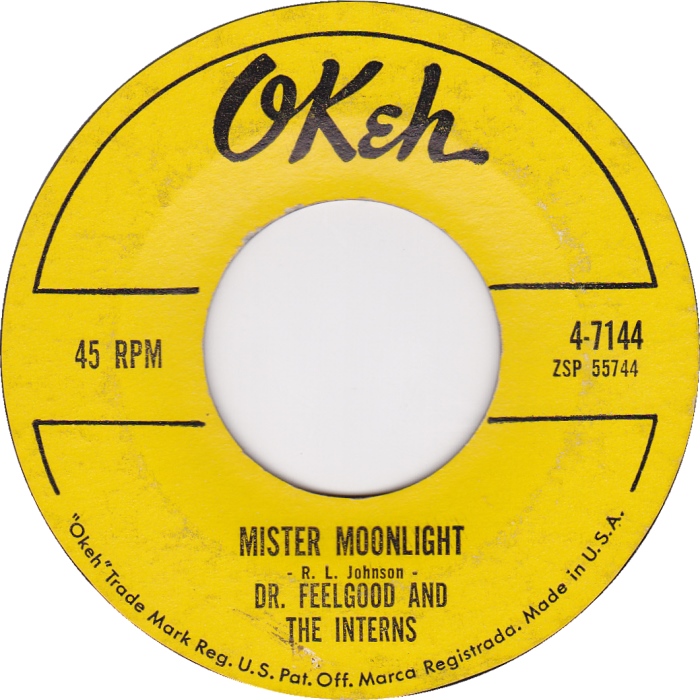 “Mr. Moonlight” featured as the B-side on the OKeh label to the self-billing 1962 single, “Doctor Feel-Good.” The bopping doctor and his crew of understudies had themselves a minor hit, so we’re talking about the flip side of an American number that would scarcely have made a scratch in England. One would need to have been “in the know,” and effort likely was required to track it down. The owner of such a disc—allowing that Lennon had formal possession—would have cared about it. And for good reason.
“Mr. Moonlight” featured as the B-side on the OKeh label to the self-billing 1962 single, “Doctor Feel-Good.” The bopping doctor and his crew of understudies had themselves a minor hit, so we’re talking about the flip side of an American number that would scarcely have made a scratch in England. One would need to have been “in the know,” and effort likely was required to track it down. The owner of such a disc—allowing that Lennon had formal possession—would have cared about it. And for good reason.
The Interns’ effort is from the same year the Beatles released their first single, but “Mr. Moonlight” really belongs to an earlier period—call it the first few years of the 1950s. Moonlight itself is anthropomorphized, given life as a Cupid-like creature—with lunar leanings intact—that bestows love.
The song is possessed of a certain stagecraft that marked some numbers of that period when there were strains of rhythm and blues but nothing—or little—that anyone overtly thought of as such. The good doctor’s “Mr. Moonlight” has a real Threepenny Opera/“Mr. Sandman”/urban fairytale vibe—this is moonlight glimpsed on a fire escape rather than at the house in the country—which harkens back to to the pre-rock and roll period, a possible explanation for why many Beatles listeners have never warmed to the song.
Listen to the original Dr. Feelgood recording
Lennon doted on it. He sang the song at the Star-Club in December 1962, so this wasn’t some last-minute, thoughtless addition nearly two years later to Beatles for Sale. He was keen to have a go.
At the Star-Club, his vocal shreds. There aren’t many ballads—the Animals’ “House of the Rising Sun” is one, Janis Joplin’s take on “Ball and Chain” another—where the singer gets to sing at his or her maximum volume, no inhibitions.
That Star-Club rendition has a touch of the feral. The Beatles excelled at doing tender and tough at once, and Lennon’s “Mr. Moonlight” is akin to Paul McCartney’s “A Taste of Honey” but with teeth. Said teeth comes down to the attacking style of the vocal.
The December 1962 offering is in what we might think of as savage young Beatles mode; the unaccompanied opening line doubles as wail, which itself doubles as plea, which further doubles as the kind of wish Jiminy Cricket advised Pinocchio to make, as Lennon had witnessed and his “Do You Want to Know a Secret” attests.
The power of the singing—which requires commitment by design of the song—implies that this person behind it has reason to believe his wish may be granted if he asks hard enough. Even the announcement that the song was next to be played had power in Hamburg: the audience knew that from out of the silence would emerge this blast of a John Lennon vocal, naked and reverberating in the air.
The Beatles’ first studio attempt at the song came in mid-August 1964, on a very John Lennon-heavy session, with “I’m a Loser” and a cover of Little Willie John’s “Leave My Kitten Alone” on the docket. Beatles people are apt to bemoan the inclusion of “Mr. Moonlight” on Beatles for Sale over the torrid Little Willie John number, and it is a baffler how the Beatles left that cover in the can.
Then again: there’s an autumnal mood to Beatles for Sale. Sometimes that’s a dappled, burnt-sun autumnal mood, as with “Eight Days a Week,” but the record is tantamount to the Beatles’ musical statement of the fall with copper and deepening hues, a prevalence of late-afternoon shadows—which keep coming earlier—across both the English countryside and in the great city of London.
In that regard, “Mr. Moonlight” fits. Suitably, the band returned to it in autumn itself, on October 18, during a break in their U.K. tour, with Paul McCartney now playing the song’s arresting Hammond organ part. Again, it’s that notion of the theatrical: a rhythm and blues song for the cabaret, which fitted McCartney’s affinities just as the song was apropos for Lennon’s vocal stylings in the second half of the Beatles’ apex year. On all such years a sun must set. “Mr. Moonlight” was a song that lent a hand—or a beam—to the lowering.
Related: The author’s deep dive into another Beatles rocker, “I’m Down”
The first volume of the Beatles’ Anthology contains takes 1 and 4 of the song. On the former, Lennon trips over a bum note at the start, which causes McCartney to tease, “nearly.” Here, without the organ, we can really hear the kind of circular drumming pattern that Starr did so well. His kit is in a form of duet with Lennon’s voice, and seems to represent the titular character as much as anything else in the song.
George Harrison’s guitar solo is straight out of “The Hippy Hippy Shake,” only slower in tempo. The Beatles dig this number. One has the sense that they’re performing it as much for them as for us. Perhaps more so.
The released version (take 8 from the October session) is the product of a process of having tried assorted approaches to the song over the last two years. They lean in harder on the theatrical aspect. The Beatles were sly and smart right from the start, and we’re still close to their beginnings—even if this marks the close of those beginnings—as makers of LPs. They understand that this is rhythm and blues kitsch, sort of like the Coasters, but also sort of like Kurt Weill.
With proto-shades of White Album sequencing, the number follows McCartney’s “I’ll Follow the Sun,” just as the moon does. Get it? The year was one of extremes and polarities for the Beatles. Nothing bad happened, of course, but nor was there any middle ground. We get a microcosmic sense of that idea between the juxtaposition of these two songs.
Listen to the isolated vocal track from “Mr. Moonlight”
Best to venture out onto that American fire escape, as approached from the perspective of rhythm and blues-loving English young men, and allow oneself to behold a form of wish-making that is also an expression of devotion. You might find that you experience “Mr. Moonlight” as you haven’t previously, which may also be proof that this selenic fellow was legitimately on to something, the same as John Lennon and the Beatles themselves.
Bonus Audio: Listen to John Lennon rehearsing “Mr. Moonlight” solo on acoustic guitar


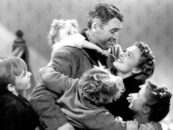
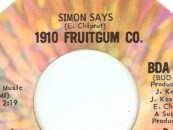
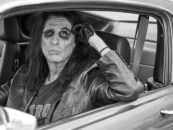
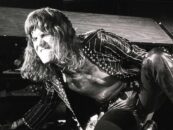

8 Comments so far
Jump into a conversationThe recordings of The Beatles will be autopsied for at least another hundred years by simple virtue of every element that made The Beatles what they were; and I have to say that Colin Fleming did an outstanding job in this article, covering every conceivable opinion and possible origins of the same.
Still, I find it difficult to believe that anyone out there is still comparing the quality of renditions, selection of covers, etc. Does there actually remain even a hint of a question about the quality of what The Beatles produced? Surely not. . .
thank you for a very interesting, deep dive into a song I had never given a second thought to. I remember not liking it very much as a kid, though I recognized Lennon’s powerful vocal qualities. This really fleshes it out for me. Thanks a lot.
Bloody hell, Mr Moonlight is great. Worst is All Together Now, hands down
I don’t care much for ANY version of this song.
It’s CONTRADICTORY: On the one hand, it’s clearly a ballad ….on the other hand, even the original by Piano Red and his group is delivered in a loud, rock way with screaming, demanding backup harmonies that are not at all tender! So one expects to hear a ballad, but one hears loud rock sounds instead. Even the backing harmony vocals are more screamed than sung in the original and Beatles versions. It’s plea for love, but it is SCREAMED, not tender at all as it should be. It’s got FUNK in it like a Jame Brown funk song, but, again, where’s the tenderness, where’s the touching part, where’s the ballad of love? It’s like a DEMAND, not a PLEA.
The value of the song is definitely John’s vocals. I’ve always dug that song and the lounge lizard organ riff. My least favorite Beatles song is “What Goes On”. I’d rather hear “Maxwell’s Silver Hammer” than that dreary song.
Top 5 worst of The Beatles at this moment are:
1. Revolution 9
2. You Know My Name (Look Up The Number)
3. All Together Now
4. Don’t Pass Me By
5. What Goes On
And Don’t Bother Me is one of the greatest from With The Beatles!
I had no idea this was such a hated song. I absolutely love this song. John’s voice is so cool on it! People are stupid this song is freaking rad.
I hate the song, I hate the organ solo, I hate the backing vocals. I just hate everything about it. Oh, yeah – I also hate the tympani.